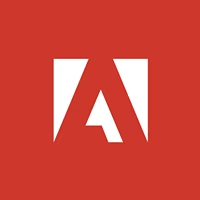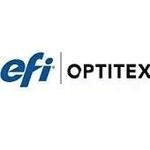Description

Adobe Creative Cloud

Zbrush
Comprehensive Overview: Adobe Creative Cloud vs Zbrush
Adobe Creative Cloud
a) Primary Functions and Target Markets
Primary Functions: Adobe Creative Cloud (CC) is a suite of applications and services from Adobe Inc. that provides tools essential for design, photography, video editing, web development, and cloud services. Some of the key applications within Creative Cloud include:
- Photoshop: Image editing and compositing tool.
- Illustrator: Vector graphics and illustration.
- Premiere Pro: Video editing.
- After Effects: Motion graphics and visual effects.
- Lightroom: Photo editing and management.
- InDesign: Page design and layout for publishing.
- Dreamweaver: Web development.
Target Markets: Adobe Creative Cloud targets a wide range of professionals and enthusiasts in various creative fields:
- Graphic designers and illustrators.
- Photographers and photo editors.
- Video editors and filmmakers.
- Web developers and designers.
- Marketing and advertising professionals.
- UX/UI designers.
b) Market Share and User Base
Adobe Creative Cloud is a market leader in digital media design and editing tools. Due to its comprehensive suite of applications, it enjoys a significant market share among creative professionals and businesses. It's widely adopted in industries such as media, entertainment, marketing, and advertising, and its user base ranges from individual freelancers to large enterprises.
ZBrush
a) Primary Functions and Target Markets
Primary Functions: ZBrush, developed by Pixologic, is a digital sculpting tool that combines 3D/2.5D modeling, texturing, and painting. It is renowned for its ability to create high-quality models with an incredible level of detail, making it the go-to software for:
- Sculpting and modeling.
- Complex texturing.
- High-resolution detailing.
- Animation-ready models.
Target Markets: ZBrush primarily targets professionals in more specialized fields:
- Video game developers.
- Film and animation studios.
- Concept artists and character designers.
- Toy and collectible manufacturers.
b) Market Share and User Base
ZBrush holds a strong position in the niche market of digital sculpting and 3D modeling. It is particularly popular in the film and gaming industries for creating intricate character models and assets. While it does not have the broad market reach of Adobe Creative Cloud, it has a dedicated user base that includes top studios and independent artists alike.
c) Key Differentiating Factors
-
Scope and Versatility:
- Adobe Creative Cloud offers a wide range of applications that cover almost every aspect of digital content creation. It serves a broader market with tools for everything from photo editing to web development.
- ZBrush is highly specialized in digital sculpting and modeling, catering primarily to industries that require detailed 3D assets.
-
Functionality:
- Adobe CC applications like Photoshop and Illustrator offer general design functions, while tools like Premiere Pro and After Effects cater to video professionals.
- ZBrush excels at intricate detailing and modeling, offering features like DynaMesh, ZRemesher, and PolyPaint for high-detail sculpting.
-
User Interface and Learning Curve:
- Adobe CC applications generally have a steeper learning curve due to their extensive feature sets but are designed with standard graphical user interfaces across different programs.
- ZBrush is known for its unique interface that may be challenging for beginners but allows for highly efficient sculpting once mastered.
-
Market Integration:
- Adobe CC integrates well with other Adobe products and third-party plugins, ensuring a seamless workflow for designers and creatives in various sectors.
- ZBrush is often integrated with 3D production pipelines and works well with other 3D modeling applications like Maya and Blender for animation and rendering processes.
In summary, while Adobe Creative Cloud serves a broad audience with a comprehensive toolkit for a wide range of digital creative processes, ZBrush is focused on excelling in digital sculpting for industries where high-quality 3D modeling is essential. Both have their unique strengths and dedicated user bases within their respective domains.
Contact Info

Year founded :
Not Available
Not Available
Not Available
Not Available
Not Available

Year founded :
Not Available
Not Available
Not Available
Not Available
Not Available
Feature Similarity Breakdown: Adobe Creative Cloud, Zbrush
Adobe Creative Cloud and ZBrush are both powerful tools used primarily in the digital art and design spheres, though their applications can be quite different. Here’s a breakdown of their similarities and differences.
a) Core Features in Common
-
Digital Art Creation:
- Both Adobe Creative Cloud (specifically tools like Photoshop and Illustrator) and ZBrush are used for creating digital art, including 2D and 3D designs.
-
Layer Management:
- Users can work in layers in both software, allowing for non-destructive editing and more complex compositions. In ZBrush, this is somewhat similar to its subtool management.
-
Brush Tools:
- Both applications include extensive brush tools that can be customized for various artistic effects, including texture painting and sculpting in ZBrush, and traditional and digital painting in Adobe Photoshop.
-
Texture Mapping:
- Adobe Creative Cloud, with tools like Photoshop, allows for texture creation and manipulation, which can be used in conjunction with ZBrush’s ability to apply and sculpt textures on 3D models.
-
High-Resolution Work:
- These tools support high-resolution projects, making them suitable for professional-level art and design work.
b) User Interface Comparison
-
Adobe Creative Cloud:
- The interfaces of Adobe Creative Cloud’s applications (such as Photoshop, Illustrator, and After Effects) are designed for versatility across a range of design tasks from photo editing and graphic design to motion graphics.
- It features toolbars, panels, and workspaces that can be customized or used in predefined layouts to suit specific tasks.
- Adobe's interface tends to be more grid and panel-based, making it familiar to those who work regularly with desktop publishing software.
-
ZBrush:
- ZBrush’s interface is significantly different and can be less intuitive for new users; it is tailored specifically for 3D sculpting and painting workflows.
- It features a more dynamic 3D workspace where users can directly manipulate and sculpt models.
- Unlike the modular panel layout of Adobe products, ZBrush has a unique palette-based interface with nested menus that can be overwhelming at first but highly efficient for sculpting once mastered.
c) Unique Features
-
Adobe Creative Cloud:
- Integration Across Applications: Adobe offers seamless integration between its applications, such as using Photoshop files in After Effects or Illustrator vectors in Premiere Pro.
- Professional Photo Editing: Photoshop is industry-standard for photo editing, offering unparalleled tools for retouching and editing photos.
- Vector Art Creation: Illustrator provides robust tools for creating detailed vector graphics, which is not available in ZBrush.
-
ZBrush:
- Advanced Sculpting Tools: ZBrush specializes in detailed sculpting tools, allowing for highly detailed and complex 3D model creation that is more intuitive and efficient compared to Adobe's offerings.
- Dynamic Subdivision Levels (DynaMesh): This allows artists to add or subtract mesh details dynamically without worrying about topology, enabling the creation of complex organic shapes.
- Polypainting: ZBrush allows painting directly on the mesh to apply color and textures without needing a separate UV map.
- Topology Tools: ZBrush offers tools like ZRemesher for automatic retopology, which are essential for preparing models for animation or export to other 3D applications.
In essence, while there is some overlap in the abilities of Adobe Creative Cloud and ZBrush, each excels in different areas and is designed to meet specific needs within the realm of digital art and design.
Features

Cloud Services and Collaboration
Video and Motion Graphics
Design and Layout Tools
Web and UX Design
Photography

Texturing
Rendering
Performance
Sculpting Tools
Best Fit Use Cases: Adobe Creative Cloud, Zbrush
Adobe Creative Cloud and Zbrush are both powerful tools used in creative industries, but they cater to different needs and specializations. Let's explore the best-fit use cases for each, the business types they serve, and their applicability across industry verticals and company sizes.
Adobe Creative Cloud
a) For what types of businesses or projects is Adobe Creative Cloud the best choice?
-
Graphic Design Firms:
- Adobe Creative Cloud includes industry-leading tools like Photoshop, Illustrator, and InDesign that are quintessential for graphic design work. These tools support creating logos, branding materials, brochures, posters, and other visual content.
-
Marketing and Advertising Agencies:
- Agencies can leverage the suite for creating compelling digital and print ads, social media content, and video campaigns using Adobe Premiere Pro and After Effects.
-
Publishing Companies:
- InDesign is perfect for laying out books, magazines, and other publications. The seamless integration with Photoshop and Illustrator enhances the quality and efficiency of publication design.
-
Web Design and Development:
- Adobe XD and Dreamweaver cater to web design and prototyping needs. These tools help designers create user interfaces and experiences for web and mobile apps.
-
Content Creators and YouTubers:
- Premiere Pro and Audition provide robust solutions for video editing and sound design, making them popular choices for video production and podcast creation.
-
Photography Studios:
- Lightroom and Photoshop offer professional-grade photo editing and workflow management solutions for photographers.
Zbrush
b) In what scenarios would Zbrush be the preferred option?
-
3D Animation and Game Development:
- Zbrush is widely used in creating highly detailed models and textures for characters and environments, making it a favorite among game developers and animation studios.
-
Film and Visual Effects:
- The ability to sculpt and texture detailed characters and creatures makes Zbrush essential for visual effects artists working on films and television series.
-
Industrial Design and Product Prototyping:
- Designers can leverage Zbrush for prototyping products and creating detailed 3D models that require organic shapes and intricate details.
-
Artists and Illustrators:
- Artists specializing in digital sculpting and painting may prefer Zbrush for its advanced sculpting capabilities and artistic flexibility.
-
Toy and Collectible Design:
- The precision and detail that Zbrush allows make it ideal for designing toys and collectibles, where intricacy and realism are paramount.
d) How do these products cater to different industry verticals or company sizes?
-
Industry Verticals:
- Adobe Creative Cloud serves a broad range of industries including marketing, advertising, publishing, education, and entertainment. Its comprehensive suite addresses needs from graphic design to web development.
- Zbrush is more focused, serving the entertainment industry, especially in areas like gaming, film, and animation, as well as industrial design and fine arts.
-
Company Sizes:
- Adobe Creative Cloud is versatile for freelancers, small businesses, and large enterprises, offering scalable licensing options and collaborative features like Adobe Teams.
- Zbrush caters more to studios and professionals who require specialized tools for 3D modeling. Smaller studios and independent artists can also effectively use it due to flexible licensing suited to varying needs.
Both Adobe Creative Cloud and Zbrush are critical tools within their respective domains, providing powerful capabilities that support efficient and creative workflows across various industry verticals and business sizes.
Pricing

Pricing Not Available

Pricing Not Available
Metrics History
Metrics History
Comparing undefined across companies
Conclusion & Final Verdict: Adobe Creative Cloud vs Zbrush
When comparing Adobe Creative Cloud and ZBrush, it’s important to consider what each tool offers, as they cater to slightly different creative needs. Here’s a breakdown that could help guide potential users:
Overall Value:
Adobe Creative Cloud offers the best overall value if you're looking for a comprehensive suite of tools for graphic design, photo editing, video production, and other creative applications. For users needing a broad array of creative tools, the Adobe suite provides flexibility and integration across its apps, making it highly versatile.
ZBrush excels and offers great value for artists specifically focusing on high-end digital sculpting and illustrations. If you are primarily a sculptor, especially in game design or film industries, ZBrush provides unparalleled features for creating detailed 3D models.
Pros and Cons:
Adobe Creative Cloud:
-
Pros:
- Variety and Integration: Access to numerous applications (Photoshop, Illustrator, After Effects, etc.) which integrate seamlessly.
- Regular Updates: Frequent updates with new features and improvements.
- Collaboration Tools: Offers cloud storage and collaborative features that are highly beneficial for team projects.
- Learning Resources: Extensive tutorials and a large community for support.
-
Cons:
- Cost: Subscription model can be expensive over time if you don't need all the apps.
- Complexity: Steeper learning curve with multiple tools which may be overwhelming for new users.
ZBrush:
-
Pros:
- Specialized Tools: Industry-leading features for 3D design and digital sculpting with powerful detail and texture capabilities.
- Performance: Exceptional handling of high polygon models without degrading performance.
- One-time Payment Option: Available with a perpetual license option, which can be cost-effective in the long term.
-
Cons:
- Niche Focus: Primarily focused on sculpting and modeling, not suited for general graphic design or non-3D projects.
- User Interface: Some users find the interface less intuitive, requiring a significant time investment to master.
Recommendations:
For Broad Creative Needs: If your creative requirements span graphic design, photo editing, video production, and more, Adobe Creative Cloud is the optimal choice due to its versatile and integrated suite of software.
For Specialized 3D Sculpting: If your primary focus is on high-detail digital sculpting and 3D modeling, with secondary emphasis on features like textures and rendering, ZBrush is the superior choice.
Hybrid Scenarios: For users whose projects may require both high-end sculpting and other creative applications, using both (budget permitting) could be beneficial. Alternatively, starting with a specific focus and expanding later as needed could also work.
Ultimately, the decision should be driven by your specific creative goals and budget. Consider trial versions if available to help determine which software aligns most with your workflow and design ambitions.
Add to compare
Add similar companies



